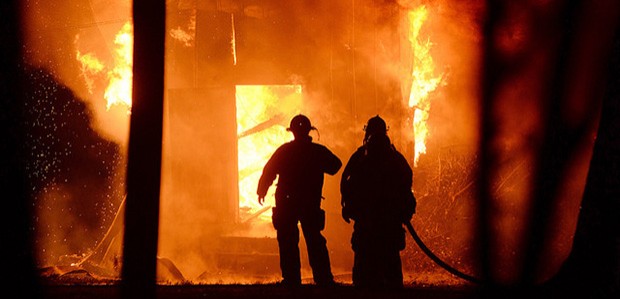Fire drills begin next week
 Active participation in the fire drills will help prepare you for a real emergency. | Photo by Zach Frailey, Flickr Creative Commons
Active participation in the fire drills will help prepare you for a real emergency. | Photo by Zach Frailey, Flickr Creative Commons
The more prepared you are, the better off you’ll be when it comes time to deal with a difficult situation.
In the case of fire drills: some feathers may be ruffled by the disruption, but the flip side of the coin is improved safety during a real emergency.
This is why Concordia University holds fire drills each year. They begin next week, and it’s imperative that all students, staff and faculty are prepared to deal with any potential emergencies on campus.
Here’s how to take an active role in the exercise:
1. Respond immediately to the alert
Do not finish what you were doing. Drop everything and make your way out of the building.
2. Be observant
Do not follow others blindly. Look for all available exits, indicated by EXIT/SORTIE lighted signs, and choose the one that is most accessible to you. By using all available emergency exits, the dangers of crowding and panic are greatly reduced.
Should you identify anyone who might need assistance, bring them to the attention of a member of CERT, the Concordia Emergency Response Team, a group of student and staff volunteers who are trained to provide assistance during evacuations and other emergencies on campus.
3. Take the stairs
Did you know that stairwells are pressurized, so that even during a fire the air will remain smoke-free? This allows building occupants to descend and exit the building in an efficient way, without having to rush or panic.
Because elevator shafts act as chimneys channelling smoke to the upper floors, elevators cannot be used during a fire alarm. Instead, they are programmed to return to the ground floor automatically.
Elevators are never safe to use during a fire.
4. Cross the street
When a building as large as the Henry F. Hall Building is evacuated, the sidewalks fill up pretty quickly, thereby posing an impediment to firefighters and emergency responders. Help improve response time by distancing yourself from the building, preferably across the street or even further away.
5. Get your updates on the incident
In the event of a real emergency, emergency notifications will be sent out with regular updates. Be the first to know what’s going on by installing Alertus on your smartphone, or sign up for other types of notifications.
Read up on how to prevent fires in the first place and these 5 ways to stay safe on campus. (Hint: Taking an active role in fire drills is one of them!)
Find out more about becoming a member of CERT.

